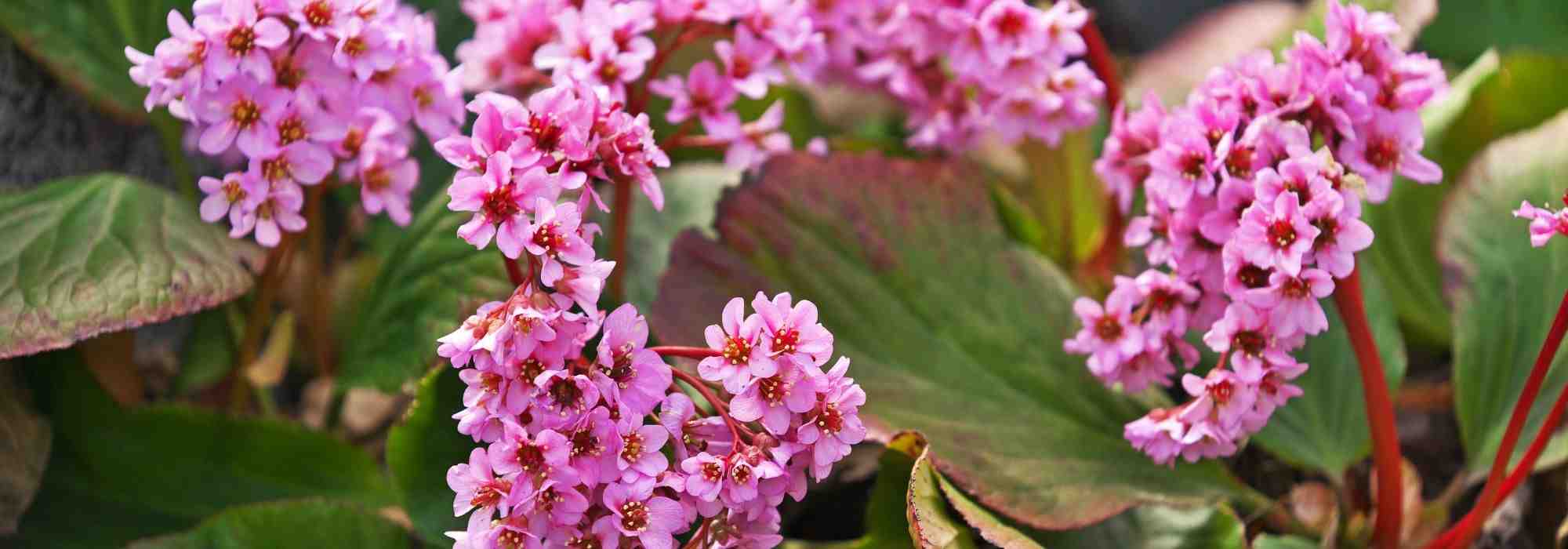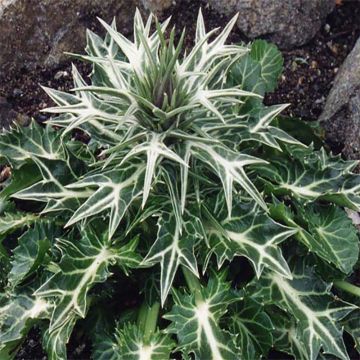

Bergenia Baby Doll - Elephant's Ears


Bergenia Baby Doll - Elephant's Ears


Bergenia Baby Doll - Elephant's Ears


Bergenia Baby Doll - Elephant's Ears


Bergenia Baby Doll - Elephant's Ears


Bergenia Baby Doll - Elephant's Ears


Bergenia Baby Doll - Elephant's Ears
Bergenia Baby Doll - Elephant's Ears
Bergenia Baby Doll
Elephant's Ears, Heartleaf Bergenia, Pigsqueak
Beautiful young plant with original variegated foliage. It took some time to carefully peel and clean the root ball, full of dead leaves that were suffocating it.
Marie-Hélène, 14/04/2023
Special offer!
Receive a €20 voucher for any order over €90 (excluding delivery costs, credit notes, and plastic-free options)!
1- Add your favorite plants to your cart.
2- Once you have reached €90, confirm your order (you can even choose the delivery date!).
3- As soon as your order is shipped, you will receive an email containing your voucher code, valid for 3 months (90 days).
Your voucher is unique and can only be used once, for any order with a minimum value of €20, excluding delivery costs.
Can be combined with other current offers, non-divisible and non-refundable.
Home or relay delivery (depending on size and destination)
Schedule delivery date,
and select date in basket
This plant carries a 12 months recovery warranty
More information
We guarantee the quality of our plants for a full growing cycle, and will replace at our expense any plant that fails to recover under normal climatic and planting conditions.

Would this plant suit my garden?
Set up your Plantfit profile →
Description
Bergenia 'Baby Doll' is a variety that will charm with its abundant flowering in pastel pink and its accommodating nature. The floral stems emerge in early spring from a clump of thick, heart-shaped leaves. In this plant, the leaves retain their slightly bluish green colour throughout the year, with a few rare red veins appearing in winter. As sturdy as its large-leaved cousins planted by our grandmothers, this charming perennial can be used to decorate a border, enhance a partially shaded rockery, or even in a lovely jar on the terrace or balcony.
The hybrid Bergenia 'Baby Doll' belongs to the Saxifragaceae family and dates back to 1950, derived from, among others, Bergenia cordifolia, a highly resistant and hardy species native to the Altaï Mountains in Siberia. 'Baby Doll' is a compact, bushy, and well-foliated variety. It will reach approximately 25cm in height when in bloom and 40cm (16in) in width at maturity. Its growth is quite slow.
The 'Baby Doll' Bergenia is a persistent herbaceous perennial with a creeping habit and vegetation gathered in dense clumps. It grows from a large, thick, and sheathed rhizome at the base of the leaves. Over time, this plant spreads very little, but its growth is so slow that it can hardly be considered invasive. Secondary stems appear here and there, eventually forming a small colony. The round, leathery, basal leaves arranged in rosettes are glossy and shiny, with a fairly light green colour. Cold temperatures sometimes give them a slight pink hue. The flowering takes place in April or May, depending on the climate. It consists of relatively large flower panicles, very pale pink around a purple centre, enclosed in old pink calyxes. Towards the end of the flowering period, the pink colour becomes slightly brighter. The flowers are borne on strong, slightly hairy stems tinged with coppery orange. They are quite long-lasting and can be used in fresh spring bouquets.
The 'Babydoll' Bergenia will thrive in most soils, but a rich, humus-rich and moist soil is preferable. Very dry soils tend to limit its growth. It will prosper in partial shade or in a sunny location that is not scorching. If you are looking for a charming and sturdy perennial that will look beautiful all year round, look no further than this Bergenia. It can be advantageously used in pots, rockeries, borders, or as a small ground cover, or at the base of deciduous bushes that allow winter sun but protect it from summer heat. It can be associated with perennial geraniums (Geranium macrorrhizum), primroses, and in woodland areas, Epimediums, oriental hellebores, and Hepaticas with their incredible blue flowers...
Bergenia cordifolia, like most bergenias, is not afraid of snow. In nature, this plant only grows where snow is abundant in winter, as it provides excellent protection for the foliage.
Bergenia Baby Doll - Elephant's Ears in pictures




Flowering
Foliage
Plant habit
Botanical data
Bergenia
Baby Doll
Saxifragaceae
Elephant's Ears, Heartleaf Bergenia, Pigsqueak
Cultivar or hybrid
Other Bergenia
View all →Planting and care
Bergenia 'Baby Doll' will grow well in most soils, but a soil rich in humus and slightly moist is preferable. Dry soils, if tolerated, tend to halt the growth of the plant. It will thrive in partial shade or sunny positions, but not scorching: dense shade should be avoided, as it does not flower, as well as intense sunlight. Cold temperatures and poor soils enhance its colours. Clumps can be planted in spring or autumn, with spacing of 40 to 50cm (16 to 20in) between plants. To propagate, rhizomes can be divided at the end of winter. Although a good fertilizer benefits the growth of this plant, care should be taken not to overly enrich the soil with nitrogen to facilitate flowering. Remove all faded leaves in spring, spread balanced fertilizer after flowering to promote new shoots. Watch out for the appearance of slugs and snails in spring.
Planting period
Intended location
Care
Planting & care advice
-
, onOrder confirmed
Reply from on Promesse de fleurs
Similar products
Haven't found what you were looking for?
Hardiness is the lowest winter temperature a plant can endure without suffering serious damage or even dying. However, hardiness is affected by location (a sheltered area, such as a patio), protection (winter cover) and soil type (hardiness is improved by well-drained soil).

Photo Sharing Terms & Conditions
In order to encourage gardeners to interact and share their experiences, Promesse de fleurs offers various media enabling content to be uploaded onto its Site - in particular via the ‘Photo sharing’ module.
The User agrees to refrain from:
- Posting any content that is illegal, prejudicial, insulting, racist, inciteful to hatred, revisionist, contrary to public decency, that infringes on privacy or on the privacy rights of third parties, in particular the publicity rights of persons and goods, intellectual property rights, or the right to privacy.
- Submitting content on behalf of a third party;
- Impersonate the identity of a third party and/or publish any personal information about a third party;
In general, the User undertakes to refrain from any unethical behaviour.
All Content (in particular text, comments, files, images, photos, videos, creative works, etc.), which may be subject to property or intellectual property rights, image or other private rights, shall remain the property of the User, subject to the limited rights granted by the terms of the licence granted by Promesse de fleurs as stated below. Users are at liberty to publish or not to publish such Content on the Site, notably via the ‘Photo Sharing’ facility, and accept that this Content shall be made public and freely accessible, notably on the Internet.
Users further acknowledge, undertake to have ,and guarantee that they hold all necessary rights and permissions to publish such material on the Site, in particular with regard to the legislation in force pertaining to any privacy, property, intellectual property, image, or contractual rights, or rights of any other nature. By publishing such Content on the Site, Users acknowledge accepting full liability as publishers of the Content within the meaning of the law, and grant Promesse de fleurs, free of charge, an inclusive, worldwide licence for the said Content for the entire duration of its publication, including all reproduction, representation, up/downloading, displaying, performing, transmission, and storage rights.
Users also grant permission for their name to be linked to the Content and accept that this link may not always be made available.
By engaging in posting material, Users consent to their Content becoming automatically accessible on the Internet, in particular on other sites and/or blogs and/or web pages of the Promesse de fleurs site, including in particular social pages and the Promesse de fleurs catalogue.
Users may secure the removal of entrusted content free of charge by issuing a simple request via our contact form.
The flowering period indicated on our website applies to countries and regions located in USDA zone 8 (France, the United Kingdom, Ireland, the Netherlands, etc.)
It will vary according to where you live:
- In zones 9 to 10 (Italy, Spain, Greece, etc.), flowering will occur about 2 to 4 weeks earlier.
- In zones 6 to 7 (Germany, Poland, Slovenia, and lower mountainous regions), flowering will be delayed by 2 to 3 weeks.
- In zone 5 (Central Europe, Scandinavia), blooming will be delayed by 3 to 5 weeks.
In temperate climates, pruning of spring-flowering shrubs (forsythia, spireas, etc.) should be done just after flowering.
Pruning of summer-flowering shrubs (Indian Lilac, Perovskia, etc.) can be done in winter or spring.
In cold regions as well as with frost-sensitive plants, avoid pruning too early when severe frosts may still occur.
The planting period indicated on our website applies to countries and regions located in USDA zone 8 (France, United Kingdom, Ireland, Netherlands).
It will vary according to where you live:
- In Mediterranean zones (Marseille, Madrid, Milan, etc.), autumn and winter are the best planting periods.
- In continental zones (Strasbourg, Munich, Vienna, etc.), delay planting by 2 to 3 weeks in spring and bring it forward by 2 to 4 weeks in autumn.
- In mountainous regions (the Alps, Pyrenees, Carpathians, etc.), it is best to plant in late spring (May-June) or late summer (August-September).
The harvesting period indicated on our website applies to countries and regions in USDA zone 8 (France, England, Ireland, the Netherlands).
In colder areas (Scandinavia, Poland, Austria...) fruit and vegetable harvests are likely to be delayed by 3-4 weeks.
In warmer areas (Italy, Spain, Greece, etc.), harvesting will probably take place earlier, depending on weather conditions.
The sowing periods indicated on our website apply to countries and regions within USDA Zone 8 (France, UK, Ireland, Netherlands).
In colder areas (Scandinavia, Poland, Austria...), delay any outdoor sowing by 3-4 weeks, or sow under glass.
In warmer climes (Italy, Spain, Greece, etc.), bring outdoor sowing forward by a few weeks.




























































